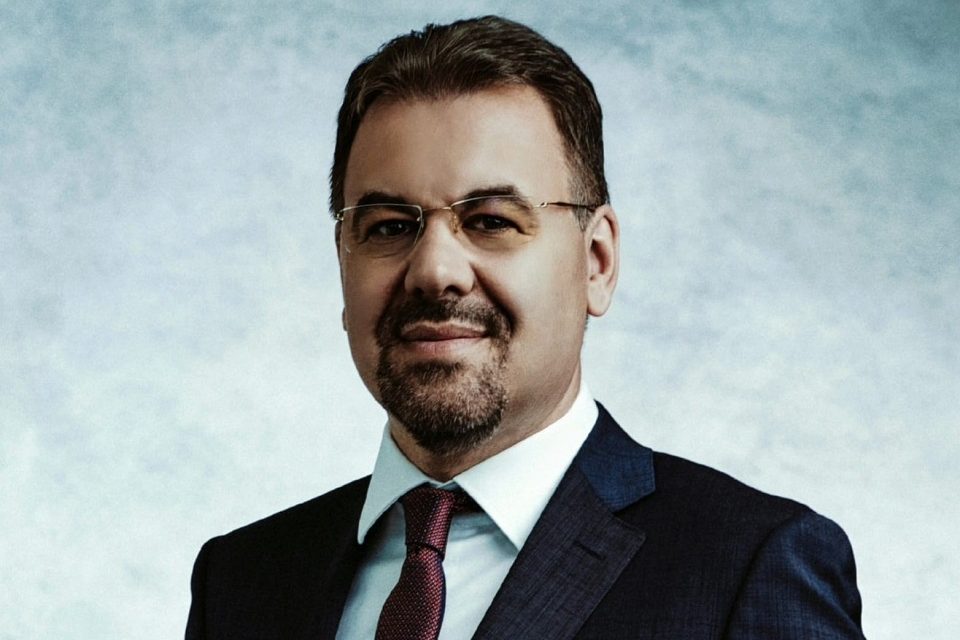Leonardo Badea (BNR): The economic dynamics of the last quarter of a century in Romania and the current need to re-balance public finances

Economic developments in the last quarter of a century have been influenced by three characteristics, which, in my opinion, have been decisive: uncertainty, the need to reform systems, and the (global) growth of public debt. It is true that during this period the world economy faced a series of shocks and challenges associated with financial, economic, pandemic, and geopolitical crises, often overlapping, which determined a volatile climate that is difficult to predict. On the other hand, the dynamics of the economy imposed the need for measures to reform the systems to respond to the new economic and social requirements and to ensure the resources to increase the prosperity of the nations.
Globalization was an important part of this process, a real engine of economic growth, contributing to the development of international trade, increasing labor productivity, but, at the same time, increasing the degree of interlacing of the economies of regions and states, multiplying the channels of contagion, and leading to an increase in the level of dependence on global supply chains. The external shocks (especially the recent ones) also determined the need to increase the resilience of the economies, highlighting the importance of raising the independence of the states as far as energy and food are concerned.
Many emerging countries, including Romania, have developed an economic model in which the goods produced for export incorporate a significant proportion of imported goods needed in the production process. If we add the domestic consumption which is predominantly based on imported goods, we have already been for some time in the presence of macroeconomic imbalances that tend to become chronic. In the case of Romania, the data (presented below) show that the stimulation of consumption to achieve economic growth in conditions of a deficit in the balance of trade also had negative side effects on macroeconomic equilibria.
Deficit became the order of the day, growing as a share of GDP and requiring more and more financing, which led to the advance of public debt. Thus, the model of global development and economic growth associated with increasing debt and dependence on global markets has become common. Data published by the International Monetary Fund show that in 2022 the gross public debt significantly exceeded the GDP level in many states with a developed economy, such as Belgium (105%), Canada (116%), France (111%), Spain (112%), Portugal (116%), USA (121%), Italy (144%) or Japan (261%).

It is true, however, that not every type of economy can afford to be heavily indebted, and here the analysis must be nuanced. Returning to the economic development model, the renowned economist Jacques De Larosière, in “Putting an end to the reign of financial illusion: for real growth” (2022), stated that the economic model of development „has slipped into a strange paradigm, one in which the bulk of economic activity is now reflected in the rise in the value of financial assets at the expense of growth, wage income and productive investment”.
Debates will certainly continue among economists about the role of economic policy as a catalyst for macroeconomic stabilization and long-term growth, but at the same time it is abundantly clear that the issue of macroeconomic imbalances and the adoption of policies aimed at their correction is nowadays a major and urgent concern.
The main macroeconomic imbalances Romania is facing, especially the budget deficit and the current account deficit, have been analyzed, discussed, and written about for many years. The causes, their dynamics, and the visible and potential effects have been widely debated and considered from multiple angles. Possible solutions have been proposed, both by economists from public institutions and from the private sector, without losing sight of the fact that each corrective action has advantages but also undesirable effects in the short term and that it requires associated measures to reduce the burden on the truly vulnerable categories. Therefore, it is difficult to add anything new to this discussion without repeating many of the relevant things that have already been said often over the years.
Unfortunately, however, the corrective measures so far have either been insufficient or have not had the intended effects, so that the problems persist and become more pressing, and the risks of future negative consequences have increased significantly. Indeed, relative to GDP, the share of the budget deficit decreased slightly at the end of last year, and the share of the current account deficit decreased to a certain extent during the first months of this year. However, these corrections are insufficient, and the levels of the two deficits continue to single us out, in a negative way, by reference to neighboring countries with which we are compared by investors. There is also the risk that some of these corrections will be canceled out by the developments in the second part of the current year, so that markets and investors may conclude that they were only temporary and that there is no sustainable process of reducing the twin deficits, backed up by appropriate and effective policies. I believe that such a situation must be avoided for at least three objective reasons:
- The first is that the macroeconomic balance would become difficult to maintain, and the risks of a crisis arising from internal causes would increase significantly, with an impact on the standard of living of the population and the potential for future development.
- The second reason, which objectively follows from the first, is that we become even more vulnerable to possible exogenous economic shocks, the probability of which is increasing in the current European economic and geopolitical context (the main destination of our exports). In other words, internal risks add to the external ones (and they are higher now), so the probability of a shock (regardless of the source) that pushes us into an economic crisis is greater.
We face growing economic and geopolitical risks regionally and internationally, and foreign capital movements that have been favorable to us in recent years could reverse at any time, which could severely affect all segments of the economy. Romania currently has the lowest level of credit rating granted by the three main international agencies compared to Poland, the Czech Republic, Hungary, and Bulgaria. We have the lowest rating in the “investment grade” category.
A further deterioration of investors’ assessments regarding the risks of investing in Romania would significantly affect us: it would reduce foreign direct investments that support the potential for growth of the local economy, which (along with the attracted European funds) sustainably finance the current account deficit; it would also increase the volatility and costs of foreign portfolio investments, an important part of which contributes to the financing of the budget deficit.
- The third reason (but not the last) why further reduction of the twin deficits is necessary results from the fact that their current high level is the expression of a structurally deficient dynamics of the Romanian economy (both in the public sector and in the private sector), which over time erodes the potential for future development (the debt burden increases, fewer resources remain for investments, competitiveness is lost, etc.). It should be added here that the future flows of European funds which are, in most cases, free resources for financing investments for Romania depend to an important extent on these corrections.
Assuming short-term costs is always difficult, but their effects are easier to bear when the correction is designed and managed in an active manner, through the adjustment of macroeconomic policies and calibrated, programmed, and gradual measures, as opposed to the situation in which, reaching the point where they are forced by the markets, these corrections would be unexpected, rapid, and out of control.
Corroborating all the above, I think it is important to reiterate that we must make these corrections because Romania’s economy needs them and because in their absence it would be increasingly exposed to risks, to the loss of development opportunities, and to an (inevitable) structural slowdown of the growth rate which would be difficult to overcome.















